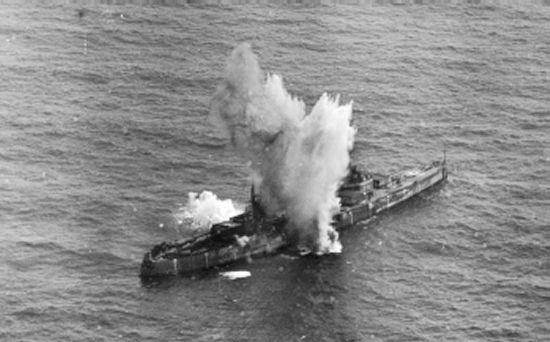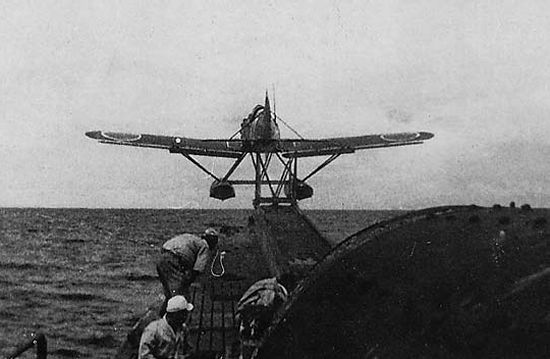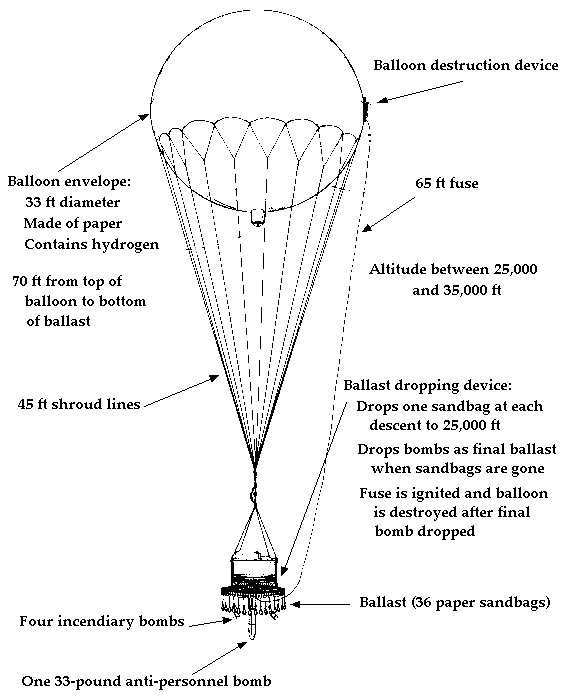|
||||||||||
|
|
||||||||||
|
||||||||||
|
|
||||||||||

The first of these incidents occurred in Tulsa, Oklahoma, in 1921. In May of that year, racial tensions were on the rise after a number of provocations by both whites and blacks. The increasing violence eventually erupted into riots during which the black section of the city was stormed on 1 June 1921. Dozens were killed, mainly blacks, and many buildings owned by blacks were burned down. Some sources have claimed that these fires were actually started by police officers who had comandeered private planes and used them to drop dynamite upon the segregated black communities.
However, the evidence to back up this story is rather sketchy, at best, and we've so far been unable to locate an impartial, well-documented source from a credible historian to confirm the account. Even so, there are indications that some sort of aerial bombardment may have occurred which would make Tulsa the site of the earliest known "bombing raid" on American soil.
A far better documented incident occurred in southern Illinois in Williamson County in November 1926. "Bloody Williamson" had already garnered national notoriety during the 1920s as the site of labor unrest among coal mine unions, one of the bloodiest Ku Klux Klan wars in history, and gang warfare between two rival groups of liquor bootleggers. The Birger Gang, led by Russian immigrant Charlie Birger, and the Shelton Gang, led by brothers Carl, Earl and Bernie, had been involved in a bloody turf battle for domination of the southern Illinois liquor racket for several months. Their ever-escalating arms race had evolved from shotguns to tommy guns and even homemade trucks covered with armored plate used to shoot up each other's roadhouses.
The warfare turned particularly violent in November 1926 as a series of shootings, bombings, and destruction of property caused terror throughout the county. Upping the ante once again, the Sheltons embarked on a bold plan to destroy the Birger Gang hideout, a place known as Shady Rest. They approached a pilot on a barnstorming tour and coerced him into taking a member of the gang on an overflight of the Birger roadhouse. On 12 November 1926, gang member Blackie Armes climbed aboard the old Curtiss JN-4 "Jenny" biplane carrying several bombs, each made out of dynamite sticks bound around a bottle of nitroglycerine. While passing over Shady Rest, Armes lighted and dropped three of the devices. Only one exploded, missing its intended target and instead killing Birger's favorite bulldog and pet bird. Though initially stunned, members of the Birger gang fired back but did no damage. The shocked pilot flew back to the airfield, let the gangster off, and then immediately took off again, probably fearing for his life!

But the first aerial attacks against the US by a foreign power had to wait another 15 years until World War II. Japan had long been building large submarines equipped with a hangar and catapult used to operate small seaplanes. These planes were used primarily for reconnaissance missions to scout the sea around the submarine and report back on possible targets. But one Japanese pilot, Warrant Flying Officer Nobuo Fujita, foresaw that these aircraft had much greater potential. In December 1941, he conceived of the idea to arm such planes with bombs to make attacks on the West Coast of the United States, the Panama Canal, and commercial shipping. His ideas were eventually approved by the High Command of the Imperial Japanese Navy, and Fujita received orders to proceed with his plan.
His submarine, the I-25, departed Japan on 15 August 1942 and proceeded to a position off the Oregon coast, about 75 miles (120 km) north of the California border. All was ready on 9 September when the submarine surfaced and Fujita's E14Y1 aircraft was catapulted on its way. His mission, however, was not quite what he had expected. Instead of attacking an American city, military base, or industrial complex, Fujita's orders were to drop incendiary bombs into a heavily forested area in order to start a large forest fire. As his superiors had explained, "The northwestern United States is full of forests. Once a blaze gets started in the deep woods, it is difficult to stop. Sometimes whole towns are destroyed. If we were to bomb some of these forests, it would put the enemy to much trouble. It might even cause large-scale panic, once residents knew Japan could reach out and bomb their families and homes from 5,000 miles away."

Once airborne, Fujita and his bombardier Petty Officer Shoji Okuda navigated northeast towards the Cape Blanco lighthouse before heading about 50 miles (80 km) inland to the target area. Their payload consisted of two 170 lb (75 kg) thermite incendiary bombs designed to spread out over an area 300 ft (90 m) in diameter. Both bombs were dropped about 6 miles (10 km) apart, and each was observed to explode in a blinding white flash scattering flames among the trees. A second mission on 29 September resulted in two more successful bombings in the Oregon forests. Although Fujita believed he had accomplished the mission, his raids resulted in only small fires that quickly died out due to the damp, rainy conditions that existed at the time. This lack of success and heavy losses to its submarine forces later in the war caused the Japanese to abandon any further attempts.
However, the basic idea remained alive, and Japan developed a new strategy to bomb the US using unmanned balloons. These balloons, known as the Fugo, were constructed of paraffined paper, latex, or fabricated silk and filled with hydrogen. Armed with four incendiary bombs and an anti-personnel bomb, the balloons were released over Japan at an altitude of 35,000 ft (10,675 m) and carried across the Pacific by the prevailing winds. The balloons were designed to release their bombs as they descended over land, again with the primary goal being to start forest fires. But of the 9,000 balloons believed to have been launched between November 1944 and April 1945, only about 500 actually reached North America. Ballons were discovered from Alaska and Canada all the way to Mexico and in 16 states ranging as far east as Michigan, Colorado, and Texas.

While a few small fires are believed to have been started by the balloons, they were largely unsucessful.
Nevertheless, the US government clamped the lid on the story and refused to allow the media to report it. When
they heard no news of the Fugo, the Japanese assumed they weren't reaching America and discontinued the project.
It was not until late May 1945 that the story began to leak out after a woman and five children were killed near
Bly, Oregon, on 5 May. They had discovered a downed balloon with a bomb still attached that exploded when
disturbed. These six were the only fatalities on the US mainland to perish as a result of enemy attack during
World War II. Luckily, these few isolated incidents remain the only aerial bombing attacks on the American
mainland to this day.
- answer by Jeff Scott, 6 April 2003
UPDATE!
We've recently stumbled across an account of another military aerial bombing incident that predates all of those mentioned above. The event occurred in Mingo County, West Virginia, in 1920. Mingo County was the site of often bloody battles over the right of coal miners to unionize during the late 1910s and early 1920s. The fighting reached its peak in 1920 after many local miners had joined the United Mine Workers union. Attempting to put a stop to the movement, mine owners began bringing in guards to break up the unions and prevent new members from joining. This growing confrontation soon led to a rebellion among the miners in which some 15,000 armed men marched on the county seats of Mingo and Logan counties attempting to overthrow the local governments.
According to this story, President Harding sent Army generals H.H. Bandholtz and Billy Mitchell to take control of the situation. Billy Mitchell, of course, was one of the early advocates of air power and helped to form the US Army Air Corps, later to become the US Air Force. It is claimed that Mitchell deployed a squadron of bombers to Charleston in order to intimidate the miners.
Related Topics:
Read More Articles:


|
Aircraft | Design | Ask Us | Shop | Search |

|
|
| About Us | Contact Us | Copyright © 1997- | |||
|
|
|||